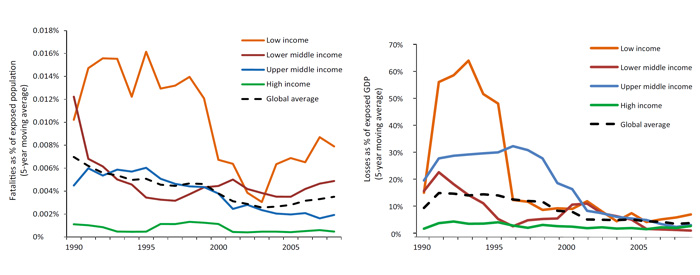| Tweet | Follow @co2science |
Paper Reviewed
Jongman, B., Winsemius, H.C., Aerts, J.C.J.H., Coughlan de Perez, E., van Aalst, M.K., Kron, W. and Ward, P.J. 2015. Declining vulnerability to river floods and the global benefits of adaptation. Proceedings of the National Academy of Sciences USA 112: E2271-E2280.
Writing in the Proceedings of the National Academy of Sciences USA, Jongman et al. (2015) describe how they "reproduced historical river flood occurrence using daily climate data for the period 1980-2010 and quantified the natural and socioeconomic contributions to flood risk trends." This work showed, as they report, that "trends and fluctuations in vulnerability to river floods around the world can be estimated by dynamic high-resolution modeling of flood hazard and exposure." And in doing such, they further found that "rising per-capita income coincided with a global decline in vulnerability between 1980 and 2010, which is reflected in decreasing mortality and losses as a share of the people and gross domestic product exposed to inundation" (see figure below).
The seven scientists also note that "vulnerability levels in low- and high-income countries have been converging, due to a relatively strong trend of vulnerability reduction in developing countries." And as a result of the totality of these several findings, they are able to report that "projections based on a wide range of climate change and socioeconomic development scenarios demonstrate that amplified adaptation efforts have the potential to largely contain losses from future floods," which should be extremely good news for everyone.

Rates of mortality (left panel) and financial loss due to flooding as a function of income. Adapted from Jongman et al. (2015).




